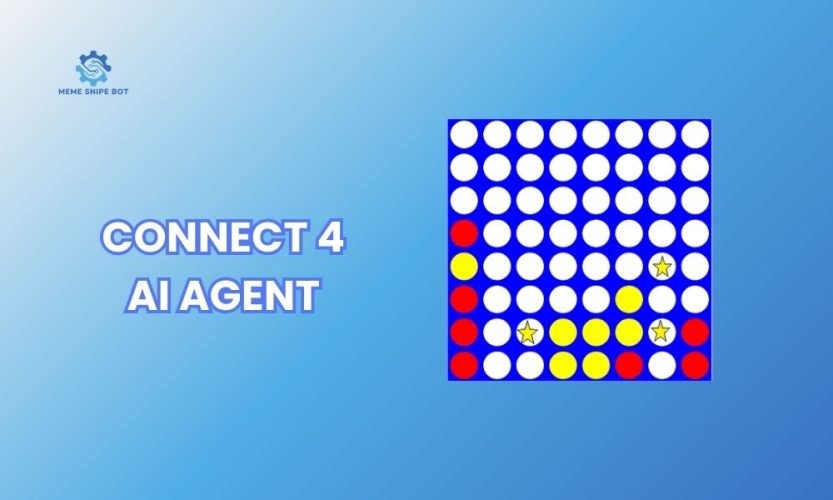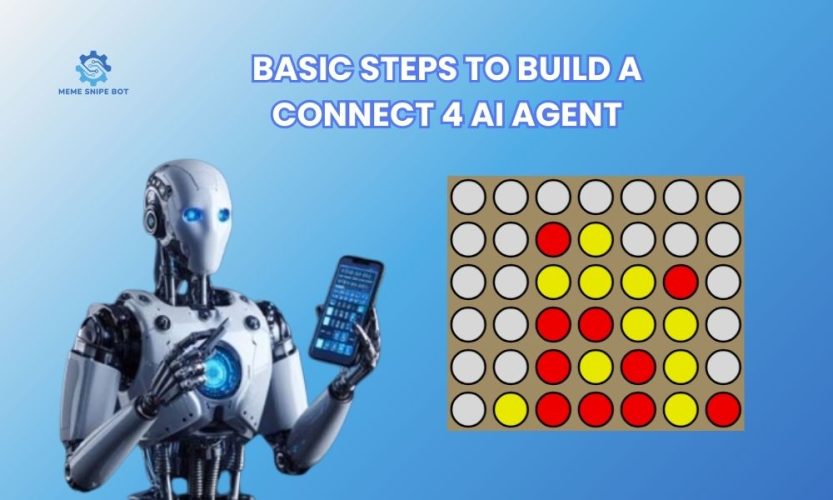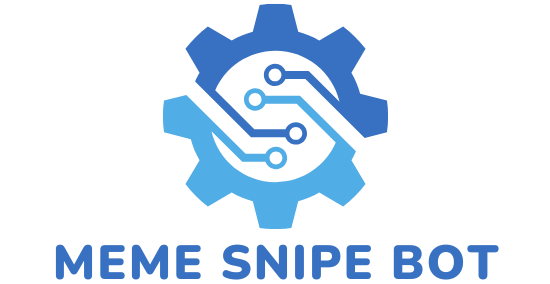Explore the world of the Connect 4 AI agent, a computer program designed to play and win the classic Connect 4 game. This article delves into the algorithms, construction methods, and exciting challenges of creating an intelligent AI opponent, helping you better understand the application of artificial intelligence in gaming and how a sophisticated Connect 4 AI agent operates.

Contents
Why build a Connect 4 AI agent?
Building a Connect 4 AI agent offers numerous benefits and is an exciting project for those passionate about programming and artificial intelligence:
- Learning about AI algorithms: It’s an excellent opportunity to learn and implement classic AI algorithms such as Minimax, Alpha-Beta Pruning, and even machine learning techniques like Reinforcement Learning.
- Enhancing programming skills: The development process requires you to structure data, implement game logic, and optimize performance.
- Deeper understanding of game theory: You’ll need to analyze winning and losing states, optimal moves, and how to evaluate a board position.
- Challenging yourself: Creating an AI that can defeat humans, or at least play intelligently, is a challenging and rewarding goal.
Popular algorithms for building a Connect 4 AI agent
There are many methods to build a Connect 4 AI agent, ranging from simple to complex. Here are some popular algorithms:
Minimax algorithm
This is a core algorithm for many two-player, perfect-information adversarial games. Minimax works by constructing a game tree, where each node represents a board state. The AI (Max player) tries to maximize its score, assuming the opponent (Min player) will try to minimize the AI’s score. The algorithm explores the game tree to a certain depth, evaluates leaf states, and then propagates values upwards to choose the best move. A Connect 4 AI agent often starts with this fundamental algorithm.
Alpha-Beta Pruning algorithm
Minimax can become very slow when the game tree is large. Alpha-Beta Pruning is an optimization technique for Minimax that helps prune branches of the game tree that are guaranteed not to lead to the optimal move.
By maintaining two values, alpha (the best score found so far for the Max player) and beta (the best score found so far for the Min player), the algorithm can skip evaluating unnecessary branches, significantly speeding up the process without affecting the outcome. A Connect 4 AI agent using Alpha-Beta Pruning is typically smarter and more responsive.
Evaluation function
Both Minimax and Alpha-Beta Pruning require an evaluation function to score non-terminal board states (not win, lose, or draw). This is the heart of a Connect 4 AI agent. A good evaluation function needs to consider factors such as:
- The number of two-in-a-row or three-in-a-row formations for the AI that can be extended to four.
- The number of the opponent’s two-in-a-row or three-in-a-row formations that the AI needs to block.
- Control of central columns (often strategically more valuable).
- Direct threats (e.g., the opponent has three discs in a row and needs only one more to win). Crafting an effective evaluation function is crucial for a strong Connect 4 AI agent.
Monte Carlo Tree Search (MCTS)
For more complex games, Monte Carlo Tree Search (MCTS) is a powerful option. Instead of static evaluation, MCTS performs many random playouts (simulations) from the current state to estimate the value of moves. It intelligently balances exploration of new moves with exploitation of known good moves, building a search tree as it goes.
This algorithm has demonstrated superior performance in games like Go, which have vast search spaces. Its adaptability and strength in handling uncertainty make it an excellent choice for developing a sophisticated Connect 4 AI agent capable of very strong and nuanced play.
Basic steps to build a Connect 4 AI agent
- Board representation: Choose a suitable data structure to store the board state (e.g., a 2D array).
- Implement game logic: Write functions to make moves, check for valid moves, and check for win/loss/draw conditions.
- Build the evaluation function: This is a critical part and requires much experimentation to fine-tune.
- Implement the AI algorithm: Choose and implement Minimax, Alpha-Beta Pruning, or MCTS.
- Create a user interface (optional): To allow a human player to interact with your Connect 4 AI agent.

Challenges in building a Connect 4 AI agent
Large state space: Although Connect 4 is simpler than Chess or Go, the number of possible board states is still very large, requiring efficient algorithms.
Designing a good evaluation function: This is often the most difficult part. A biased or inaccurate evaluation function will lead to a poorly performing AI.
Search depth: Deciding the search depth for Minimax/Alpha-Beta is a trade-off between the AI’s strength and its response time. An effective Connect 4 AI agent balances these aspects.
Building a Connect 4 AI agent offers immense learning in AI and coding, a solid step for future projects. Discover more about developing a Connect 4 AI agent and other tech insights by following Meme Snipe Bot for your daily dose of innovation and knowledge!
